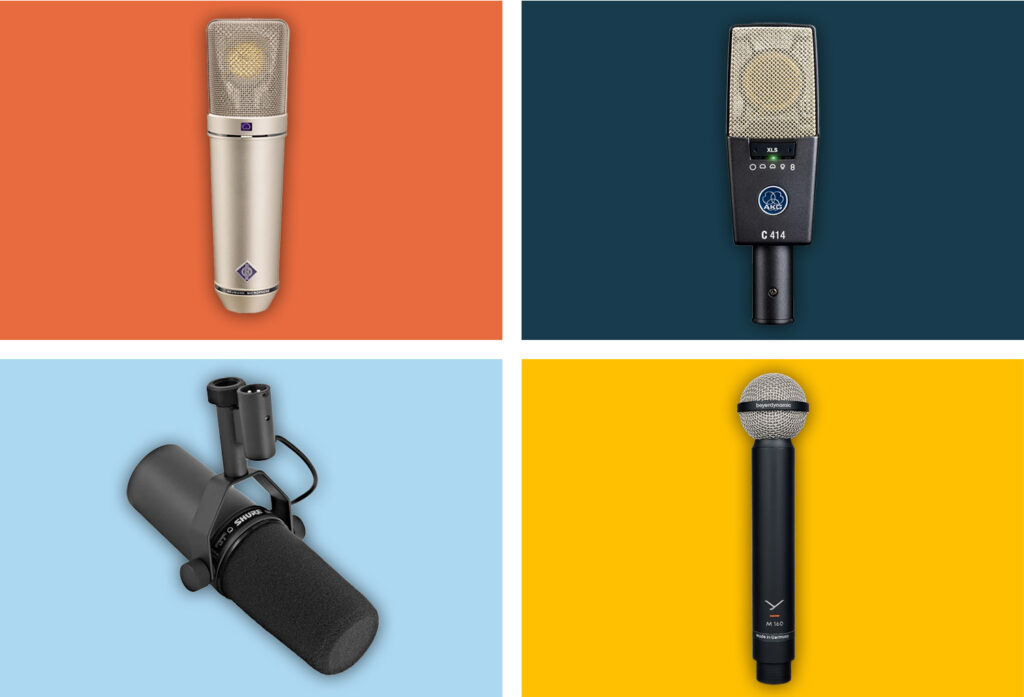Recording vocals is undoubtedly one of the most important, if not the most important process in the production of a song. The voice is always at the center of a song and therefore the most important and supporting element.
For the best possible vocal recording, you need the best microphone, and unfortunately, there is no such thing as a one-size-fits-all microphone. Every situation and every voice is different, and every microphone has its advantages and disadvantages in different areas. Depending on whether the recording room is acoustically optimized or not, a different type of microphone is required.
In this article, I will review models at all price points, from the professional with a perfectly optimized recording studio to the home producer recording in their bedroom. But before you choose a microphone, there are a few things you should consider.
Is the recording space acoustically optimized?
This is the most important question before choosing a microphone. Depending on whether your room is acoustically optimized, you should use a dynamic or a condenser microphone.
Condenser microphones sound clearer, more detailed, and have a more balanced frequency response than dynamic microphones - so they are generally better for vocal recordings. However, they have the disadvantage of being more sensitive to room reflections due to the sensitivity of the diaphragm. This makes them unsuitable for rooms that are not acoustically treated.
In this case, dynamic microphones are better because they pick up far fewer reflections and more sound only from the front. Therefore, a cheap dynamic microphone like the Shure SM58 will sound better in such a room than an expensive condenser microphone like the Neumann U87. The latter picks up all the reflections and the voice sounds very spacious - like in a bathroom.
So if you don't have an acoustically optimized room, a vocal booth, or something like that, you should definitely go with a dynamic mic - and you can get totally professional results. Ed Sheeran, for example, recorded the vocals for his song "Bad Habits" with a dynamic microphone, the Shure SM7B. So did Michael Jackson for his entire Thriller album.
Tip: If you are looking for a vocal microphone for karaoke or just for fun, check out my comparison of the best karaoke microphones.
Do you want the voice to sound natural?
The next question you should ask yourself is whether you want the voice to sound natural or whether you want a specific coloration. If you want a neutral sound, there are microphones that do this very well, such as the Rode NT1 or the Neumann U87. On the other hand, if you want the microphone to have "character," tube microphones such as the Rode NTK may be more appropriate.
I always recommend that beginners use a more neutral mic that leaves you with all the options when mixing. You can still distort a neutral mic a bit in the mix and make it sound almost like a tube mic, whereas a tube mic will never sound neutral.
Once you have some experience with a neutral microphone and know your voice well, you may want to consider a sound-coloring microphone, such as a tube or ribbon microphone. See the end of this list for some recommendations.
And if you want to learn more about vocal mixing and vocal sound in general, I recommend my article about creating the perfect vocal chain.
In a nutshell: Which vocal microphone is right for you?
The answer depends largely on whether your recording room is acoustically optimized. If so, you should definitely use a condenser microphone. The Rode NT1A is a very good option for beginners who don't want to spend a lot of money, as it delivers a very high-quality sound for under €200. For slightly higher demands, microphones such as the AKG C414 or the Neumann U87Ai are best suited.
If your recording room is not acoustically optimized, you should rather choose a dynamic microphone. The Shure SM7B is one of the best options as it offers a clarity and fidelity reminiscent of condenser microphones.
Condenser microphones for vocal recordings
First, we will look at condenser microphones, which are generally the best choice for recording vocals in the studio, assuming good acoustics.
Rode NT1-A - Best vocal microphone under 200€
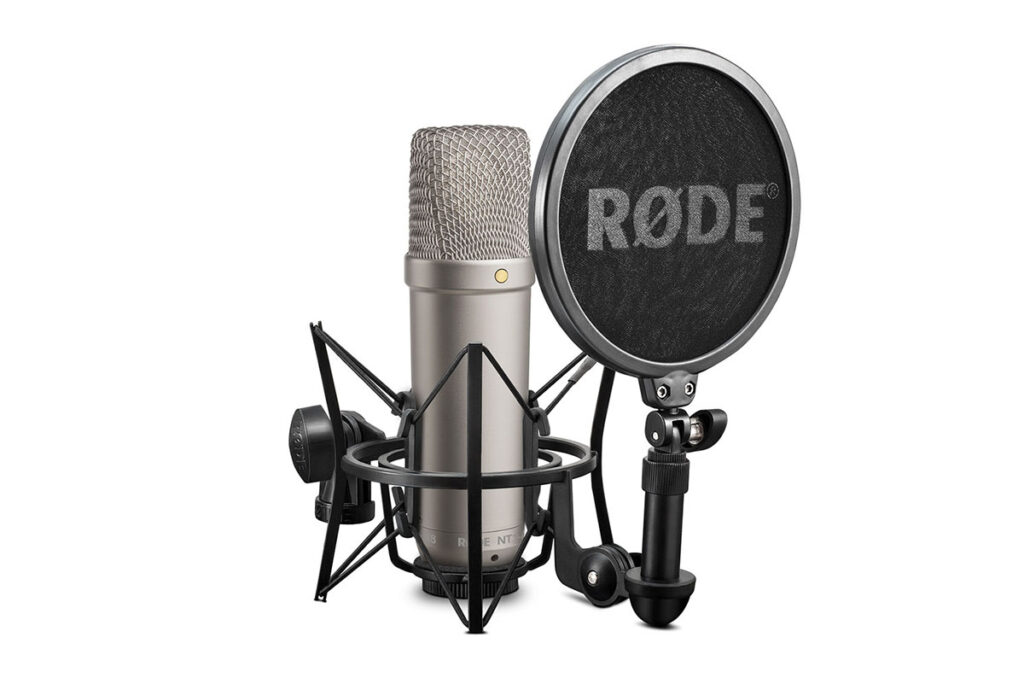
SPECIFICATIONS
Type: Large diaphragm condenser microphone
Directional characteristic: Cardioid
Optimal for: Clear voice with precise detail reproduction
LINK
ARGUMENTS IN FAVOR
- High-end sound for little money
- True-to-life and very detailed sound
- Good bass response
NEGATIVE POINTS
- –
The Rode NT1A is already a legend among beginners, and for good reason! It is extremely affordable - €180 for the set with spider and pop filter - and sounds extremely good and very detailed.
This microphone can reproduce the voice very clearly and precisely and has a wide and balanced frequency range with a slight boost in the high mids, which is very good for the voice. It was the first vocal microphone I bought for my studio and I still use it. I've often compared it to my Neumann U87 (a mic that costs almost 15 times as much) and most people would never hear the difference.
Because of these characteristics, this mic is often the first choice for many producers, and that's a good thing. Countless indie hits have been recorded with this mic, and at the end of the day, it's almost indistinguishable from more expensive models when all the other instruments are in the mix.
So if you have a good room and want to record your voice with neutrality, clarity, and authenticity, the Rode NT1A is a very good choice.
Audio Technica AT2020 - Best vocal microphone under 100€
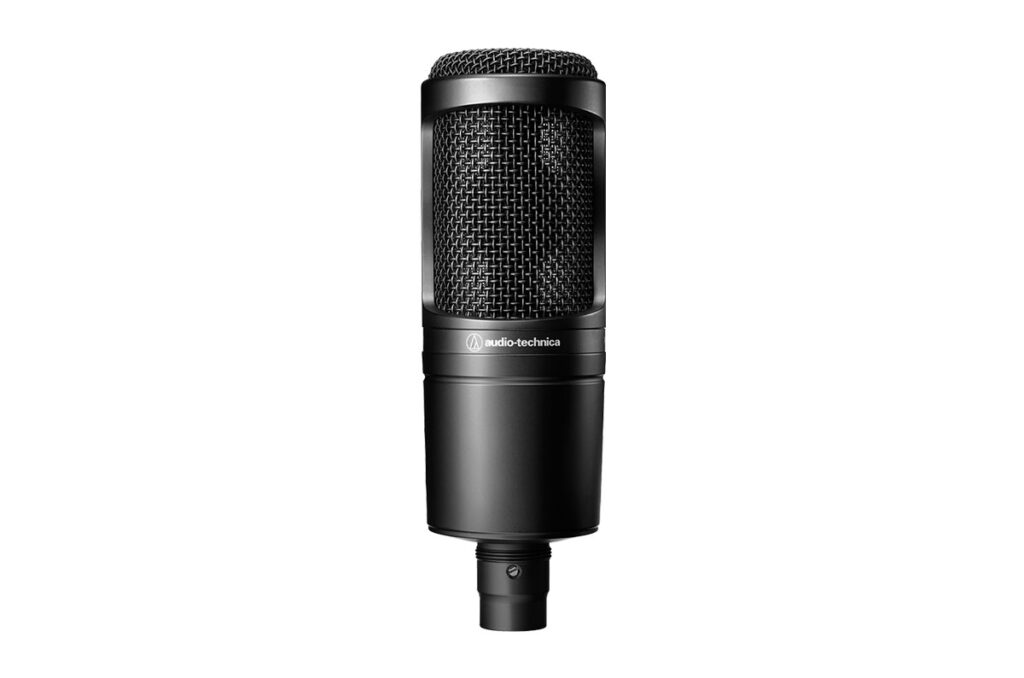
SPECIFICATIONS
Type: Large diaphragm condenser microphone
Directional characteristic: Cardioid
Optimal for: Entry into the world of condenser microphones
LINK
Audio Technica AT2020 (98€)
ARGUMENTS IN FAVOR
- Unbeatable price
- Good sound with a balanced frequency range
NEGATIVE POINTS
- Bass not as strong as with other condenser microphones
If you're only spending 100€ but don't want to compromise on quality and clarity, the Audio Technica AT2020 is the right choice. As you would expect from a condenser microphone, it sounds crystal clear and rich in detail. The bass is a bit weaker than the Rode NT1A, but for vocals this is not really important.
The AT2020 is a good all-rounder - it sounds very neutral and can be used for both male and female vocals, as well as many instruments. It does have a boost in the 7.5kHz-13kHz range - so it's not completely neutral - but many vocal mics in that range do. If the highs are too harsh, you can reduce them a bit with an EQ.
Billie Eilish is known for recording many of her songs in her brother Finneas O'Connell's home studio using relatively inexpensive equipment. One such device is the Audio Technica AT2020, which she used to record the vocals on "Ocean Eyes. It just goes to show that the success of a song is not as much about the equipment as it is about the musicians and the ideas.
So if you don't want to spend a lot of money, I would recommend this microphone. But again, you need good acoustics or a vocal booth to get good results.
AKG C414 - Versatile vocal microphone for just under €1000
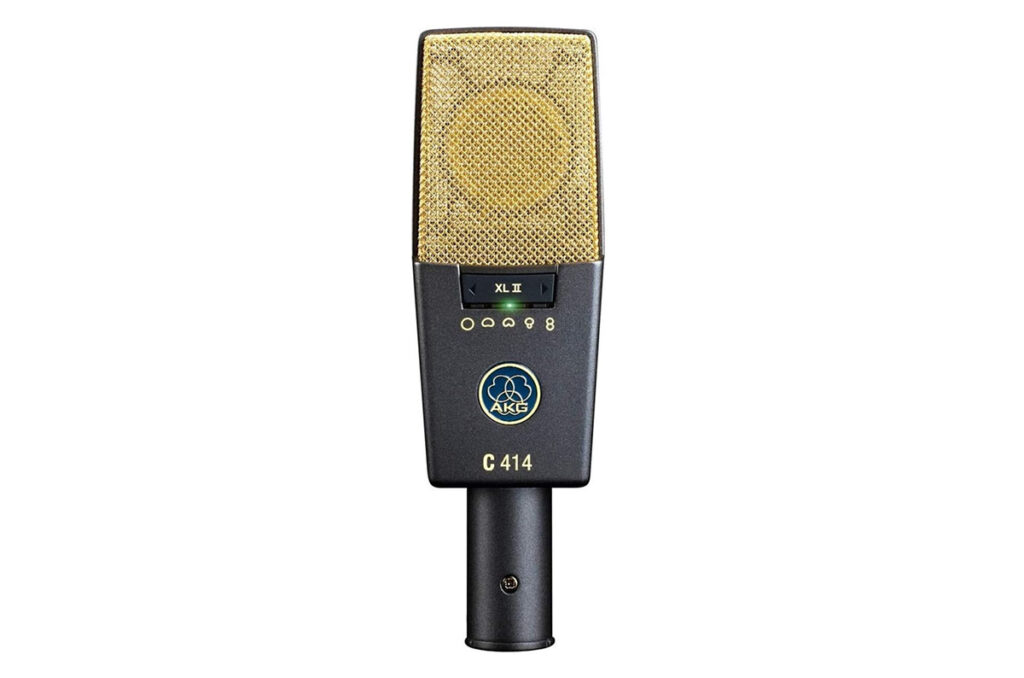
SPECIFICATIONS
Type: Large diaphragm condenser microphone
Directional characteristic: Cardioid, wide cardioid, hypercardioid, omnidirectional, figure eight + 4 intermediate settings
Optimal for: Professional vocal recordings in the studio
LINK
AKG C414 XLS (999€)
AKG C414 XLII (1.039€)
ARGUMENTS IN FAVOR
- The variety of directional characteristics opens up many possibilities
- Highly detailed sound with excellent impulse response
- Very wide frequency response
NEGATIVE POINTS
- –
If you have a larger budget and are a little more serious, the AKG C414 is a great entry into the world of professional microphones. The AKG is now legendary and can be found in every recording studio in the world because it sounds incredibly good and neutral.
But the best thing about this microphone is the different polar patterns you can choose from! You can choose from 5 polar patterns (cardioid, wide cardioid, hypercardioid, omnidirectional, figure-eight) and 4 intermediate patterns. This makes the microphone incredibly versatile - the different polar patterns are especially interesting for vocal recordings, as the proximity effect is different with each polar pattern.
Otherwise, the microphone sounds as you would expect from a good condenser mic-crystal clear and rich in detail, with a very wide frequency response that captures both bass and treble well.
Before you buy, however, you should know that there are two different versions of this vocal microphone: The XLS version and the XLII version. The XLS version sounds more neutral, while the XLII version has a small presence boost optimized for the human voice. Therefore, the XLII version usually sounds better for the voice than the XLS version.
Neumann TLM 103 - Best vocal microphone under 1200€
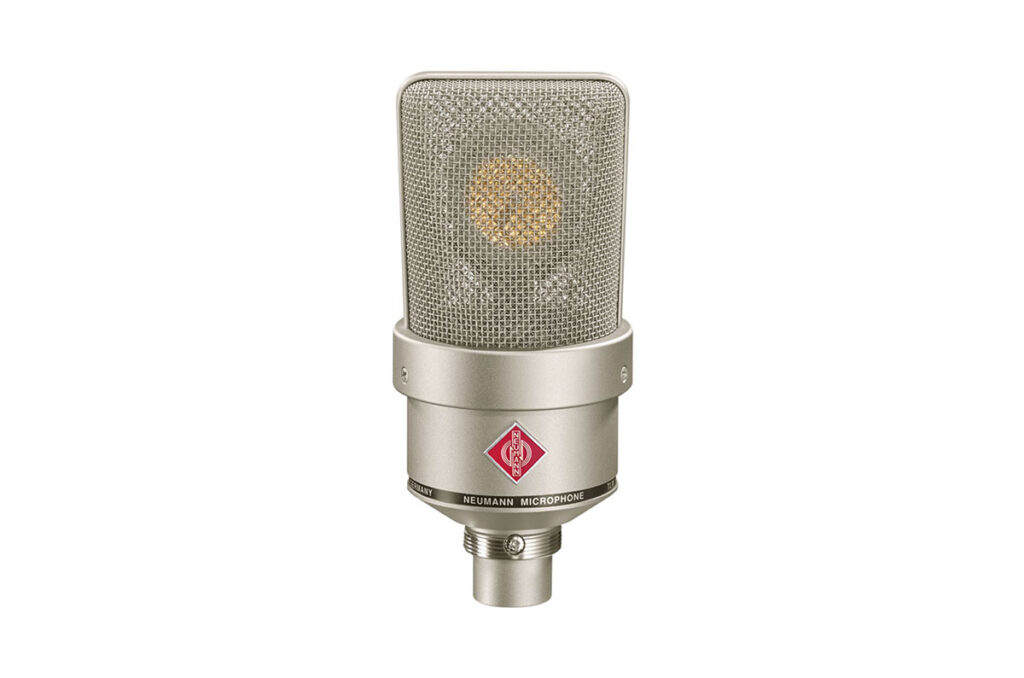
SPECIFICATIONS
Type: Large diaphragm condenser microphone
Directional characteristic: Cardioid
Optimal for: Professional vocal recordings in the studio
LINK
Neumann TLM 103 (1.039€)
ARGUMENTS IN FAVOR
- Incredibly detailed sound, as you would expect from Neumann
- Very good treble reproduction
NEGATIVE POINTS
- In view of the price, it would be good if there were more directional characteristics
This Neumann vocal microphone uses the same capsule as the legendary U87 - so the sound is very similar, except that you can't change the polar pattern on the TLM 103.
The TLM 103 is a cardioid, but like the U87, it sounds very detailed. The subtleties you can hear with this microphone are incredible - but that's typical Neumann. The capsule is very sensitive and picks up even the softest sounds.
Also on the subject of noise: This microphone has almost no self-noise, which of course contributes greatly to the hi-fi sound. Even with extreme amplification (which is rarely necessary with such a sensitive microphone), no noise is audible.
The frequency response is very good, but does not go as low as its big brother, the U87, and shows a stronger boost in the upper mids. This shows that this microphone has been optimized for vocal recordings, as it boosts the important "beautiful" frequencies of the voice.
Neumann U87 - Best neutral vocal microphone
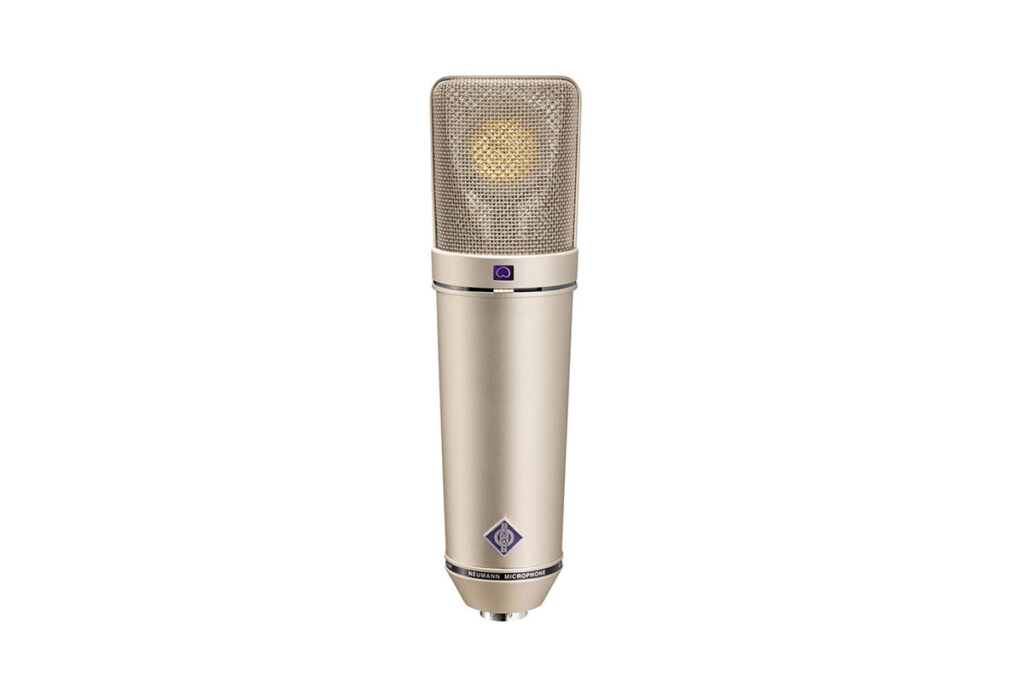
SPECIFICATIONS
Type: Large diaphragm condenser microphone
Directional characteristic: Cardioid, figure of eight, omnidirectional
Optimal for: Professional vocal recordings in the studio, but can be used for any instrument
LINK
Neumann U87Ai (2.699€)
ARGUMENTS IN FAVOR
- The reference for neutral sound
- Best detail reproduction on this list - you can really hear everything with this microphone
- Robust and durable - this microphone can last for decades
NEGATIVE POINTS
- Not cheap
This is the most famous studio microphone ever made, and for good reason. Manufactured since 1967, it can be found in every professional studio in the world because it is simply one of the most versatile microphones in the world.
It sounds very, very neutral - the Neumann U87 is actually used as a reference for absolutely neutral sound. It has the 3 standard polar patterns (cardioid, figure-eight, omnidirectional) and picks up even the smallest details.
Its frequency response is huge - it picks up very low frequencies perfectly, which is not the case with many other microphones. So if the voice is very low, it's one of the best vocal mics around. It also has a slight boost in the 5-7 kHz range, but this is very musical and rarely bothers.
The omnidirectional polar pattern produces a very neutral sound, as there is no proximity effect. The voice sounds crystal clear and without the typical bass boost that is almost always present in vocal recordings. And you can sing as close to the microphone as you want!
This microphone can also be used to record virtually any other instrument - bass, guitar, piano, brass, drums... So when you buy a Neumann U87, you get a microphone that can be used in a variety of ways for many years to come.
But it also costs a small fortune - at almost €3,000, it's an investment you should think about carefully. In my opinion, however, it's worth every penny - and these microphones hardly lose value over time, so you can easily sell them if you need to.
Slate Digital ML-1 - Modelling microphone for just under €500
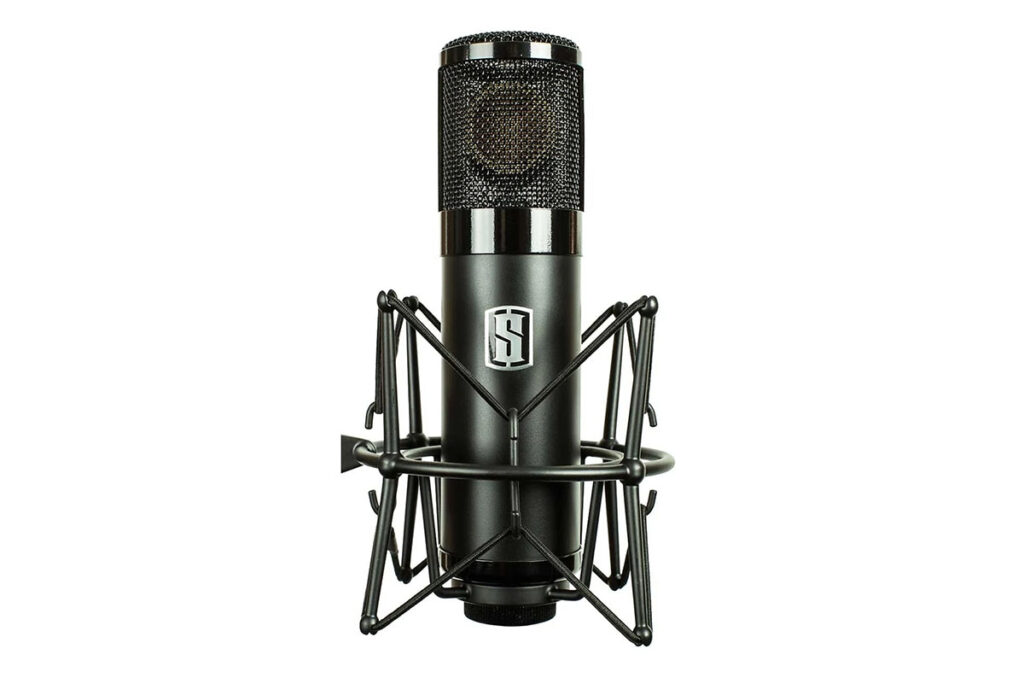
SPECIFICATIONS
Type: Modelling condenser microphone
Directional characteristic: Cardioid
Optimal for: Simulation of famous microphones
LINK
ARGUMENTS IN FAVOR
- Very versatile, as many timbres can be simulated
- Microphone model can also be changed after recording
NEGATIVE POINTS
- –
Slate Digital is known for its modeling technology that allows the simulation of well-known equipment. The ML-1 is a vocal microphone that allows you to digitally simulate the sound of many different microphones.
With the VMS plugin, you can completely change the sound of the microphone even after recording - you can change the microphone model after recording! This opens up a lot of possibilities when mixing. Although the microphone simulations do not sound exactly like the original microphones, the sound character is very close to the original.
Otherwise, this microphone sounds very good even without simulation - it is very impulsive and has a wide frequency response, so it picks up all the details in all the frequency ranges perfectly.
Recommended if you are looking for a versatile vocal microphone for experimenting with different timbres.
Dynamic microphones for vocal recordings
If you have an acoustically untreated room, you should use a dynamic microphone for your voice recordings. It will sound drier than a condenser microphone.
There are also a number of high-quality dynamic microphones that are used in even the most expensive studios. They sound almost as impulse-true as condenser mics, and those with large diaphragms reach down into the low frequency range. The only area where you can hear a clear difference is in the high frequencies, but even those can be easily boosted.
Shure SM7B - The best dynamic microphone for vocals
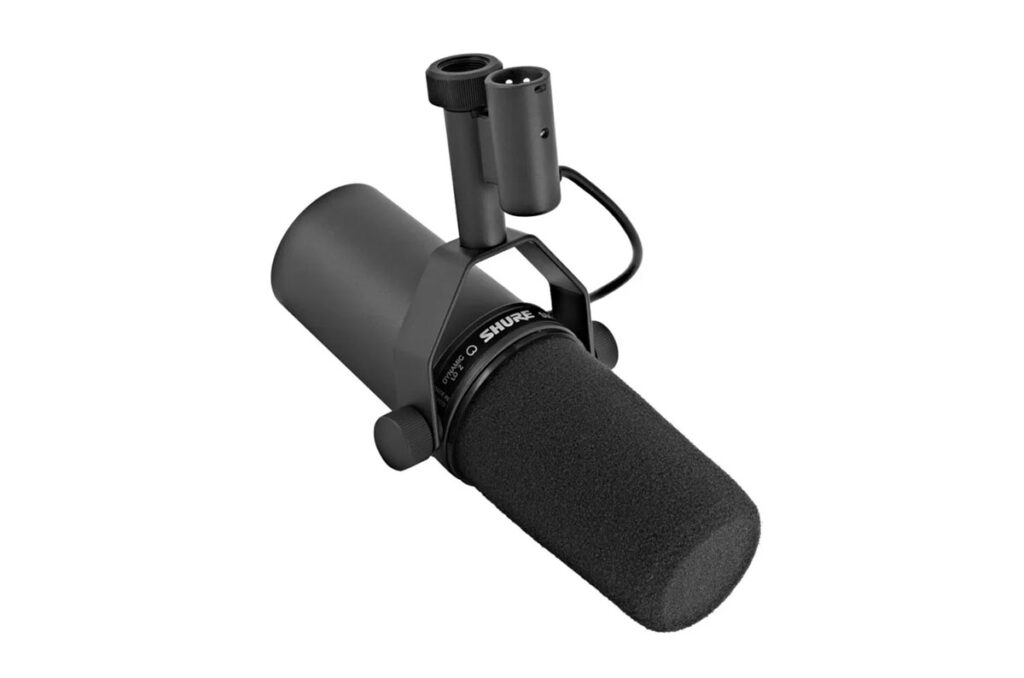
SPECIFICATIONS
Type: Dynamic microphone
Directional characteristic: Cardioid
Optimal for: Recording vocals, even in acoustically untreated rooms
LINK
Shure SM 7 B (389€)
ARGUMENTS IN FAVOR
- The sound is very natural and rich in detail and is more reminiscent of a condenser microphone
- Switchable HF and LF can change the sound nicely
NEGATIVE POINTS
- The microphone needs a lot of gain
Originally designed for broadcast applications, this Shure microphone has become legendary and can be found in studios around the world. The reason is simple: it sounds very detailed for a dynamic microphone and has a very wide frequency response that is more typical of condenser microphones.
And it doesn't cost a fortune-at just under $400, it's a real bargain. Like most moving-coil microphones, it is very rugged, which makes it great for live use. It also has a midrange boost, which makes the voice a little more assertive, and a low-cut filter, which adds a little more clarity.
In an acoustically untreated room, this microphone sounds much better than any other condenser microphone on this list. This is why it is the most popular podcast microphone in the world, as podcast rooms are typically not acoustically treated.
The Shure SM7B was made famous by Michael Jackson, who recorded his entire album "Thriller" with this vocal microphone. It is actually the predecessor model Shure SM7, which is almost identical in sound to the SM7B.
However, dynamic microphones like this require a lot of gain, much more than any condenser microphone. So much, in fact, that many audio interfaces can't deliver enough without producing an extreme amount of noise. That's why Shure recently released the Shure SM7dB, which includes a small preamp. However, you can also buy a FetHead preamp such as the TritonAudio FetHead and connect it directly to the microphone.
Shure SM58 - The best dynamic vocal microphone under 100€
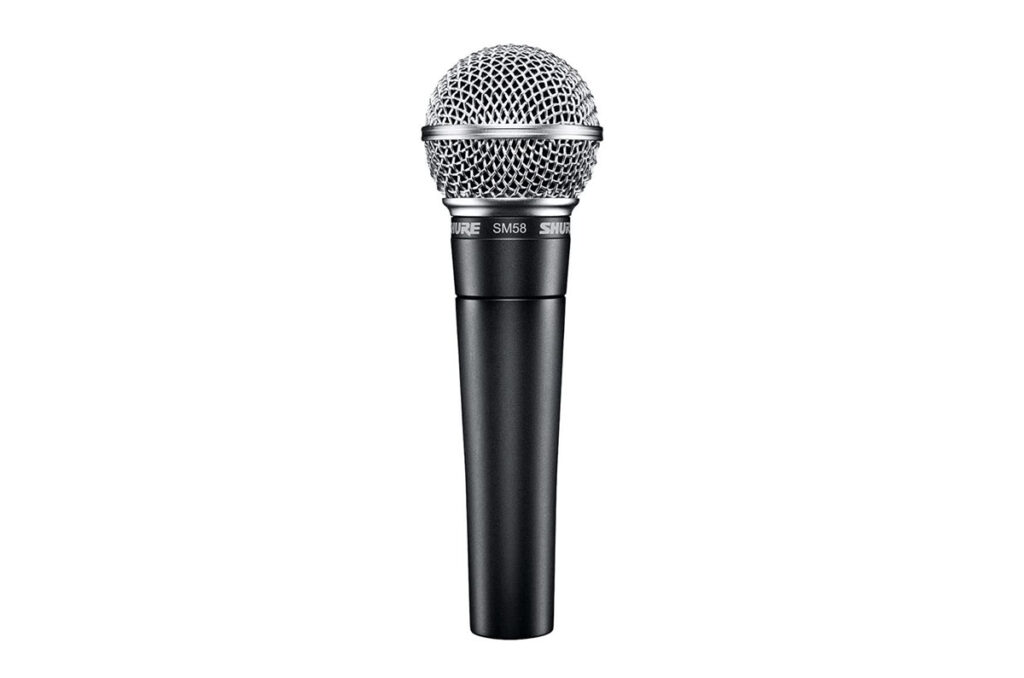
SPECIFICATIONS
Type: Dynamic microphone
Directional characteristic: Cardioid
Optimal for: Recording vocals, even in acoustically untreated rooms
LINK
Shure SM58 LC (109€)
ARGUMENTS IN FAVOR
- The sound is quite good for the price
- Incredibly robust
NEGATIVE POINTS
- Not as natural sounding as the other dynamic microphones on this list
The Shure SM58 is the most popular live vocal microphone in the world, but it also delivers very good results in the studio. If the acoustics are not the best and you want to spend the absolute minimum on a vocal microphone, the SM58 is the one to buy.
It sounds relatively similar to the SM7B, but has slightly less bass and no presence boost. Otherwise, the sound is relatively transparent with a slight boost in the midrange, and the impulse response is quite good for a dynamic microphone.
Add a little bass and you have a great sound for the voice that can be quite suitable for radio. Personally, I preferred it when recording with my expensive condenser mics, because the sound was a bit more appropriate for the situation (e.g. if you wanted more "vintage flair").
Again, it is not the most expensive equipment that makes a great song, but the musical performance and the idea itself. If you have a great idea that is perfectly executed, it often doesn't matter what equipment is used to make it happen.
Electrovoice RE-20
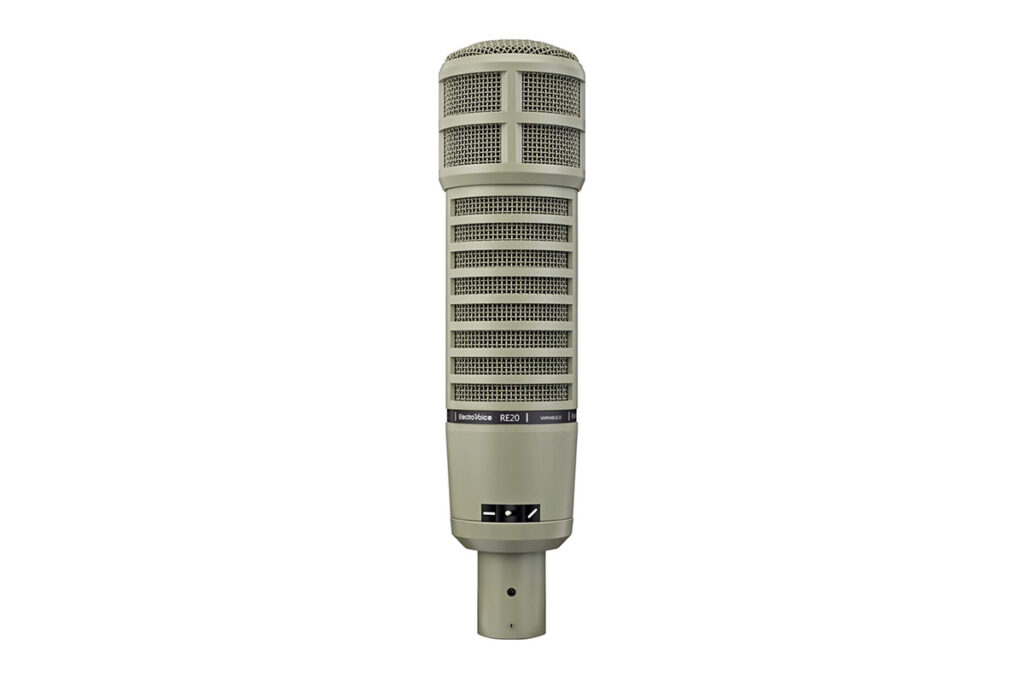
SPECIFICATIONS
Type: Dynamic microphone
Directional characteristic: Cardioid
Optimal for: Recording of vocals, especially male vocals
LINK
Electrovoice RE-20 (609€)
ARGUMENTS IN FAVOR
- Very good impulse response
- Very good bass response
- Proximity effect barely present
NEGATIVE POINTS
- Needs a lot of gain
This microphone is also very popular with podcasters because it also has very good impulse fidelity, which makes it a great vocal microphone. I would say it sounds a bit clearer and definitely more neutral than the Shure SM7B, but it also costs more. However, the neutral sound is very easy to EQ.
This microphone also has a clarity that is unusual for dynamic microphones. Above all, it has a very good bass response, which makes it particularly suitable for low male voices. A particular highlight of this microphone is that there is hardly any proximity effect, which is remarkable for a microphone with a cardioid characteristic.
You can sing very close to the microphone and the voice remains relatively neutral. This makes the microphone great for quiet recordings because you can get very close to the microphone. This means you don't have to turn the preamp up to an extreme level.
Recommended if you want a very neutral microphone that sounds good in any room.
Sennheiser MD-441
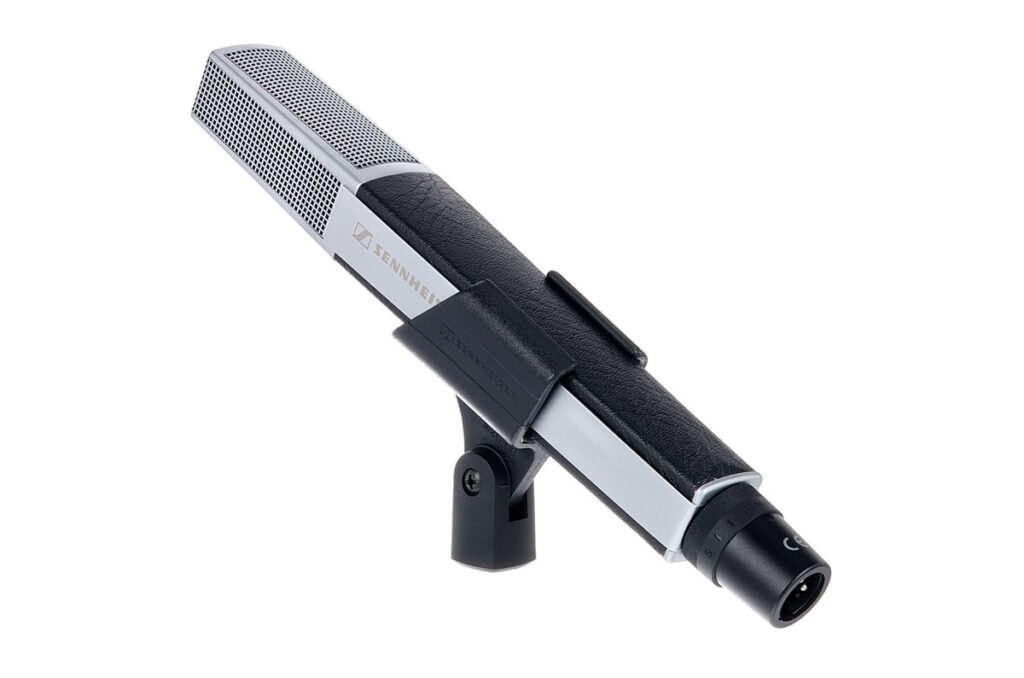
SPECIFICATIONS
Type: Dynamic microphone
Directional characteristic: Supercardioid
Optimal for: Recording of vocals
LINK
Sennheiser MD441-U (898€)
ARGUMENTS IN FAVOR
- Very neutral
- Very detailed
- Less susceptible to feedback
NEGATIVE POINTS
- Not cheap
The Sennheiser MD-441 is another legend among dynamic vocal microphones. It has the most neutral frequency response of all the dynamic microphones on this list, but it also has the highest price. It is also the only microphone on this list with a supercardioid polar pattern, which makes it less susceptible to lateral feedback.
This microphone would be the dynamic equivalent of the Neumann U87: It sounds extremely neutral and free of coloration, so it can be used in almost any situation and always delivers good results. It is extremely accurate and picks up the finest details - the sound is very similar to that of a condenser microphone.
It has built-in HF and LF shelves to adjust the sound a bit, but the changes are very subtle. I find it's better to adjust the sound later in the mix than to lock it in before recording.
Recommended for anyone who can afford it, this microphone will last for decades and can be used on all kinds of instruments.
Sound coloring microphones
We will now look at microphones that do not reproduce the voice as it sounds, but rather add a certain amount of coloration. Specifically, we will look at tube microphones, a special subset of condenser microphones, and ribbon microphones, a special subset of dynamic microphones.
Tube microphones use tubes to amplify the signal, which adds certain harmonics to the signal that make it sound "warmer". Especially when the signal is very loud, distortion and natural compression are created that sound very musical. The result is beautiful distortion, similar to that of tube amps for electric guitars.
This is why these microphones can be used very well in certain situations, such as classic hard rock recordings. The voice gets a lot of power and a certain beautiful color. But it is not a sound that is universally suitable for all situations.
Ribbon microphones have a special sound: similar to condenser microphones, they sound very detailed because the diaphragm is made of very sensitive metal foil, but due to their design, they have a slight high-frequency cutoff, which gives them a "vintage" character. Ribbon microphones were the forerunners of condenser microphones for high-quality studio recording in the 20th century, which is why their sound is associated with vintage.
They are great if you are looking for a vintage character that is a little darker and not as "high-end" as a condenser, but still very detailed.
Rode K2 - Tube microphone for relatively little money
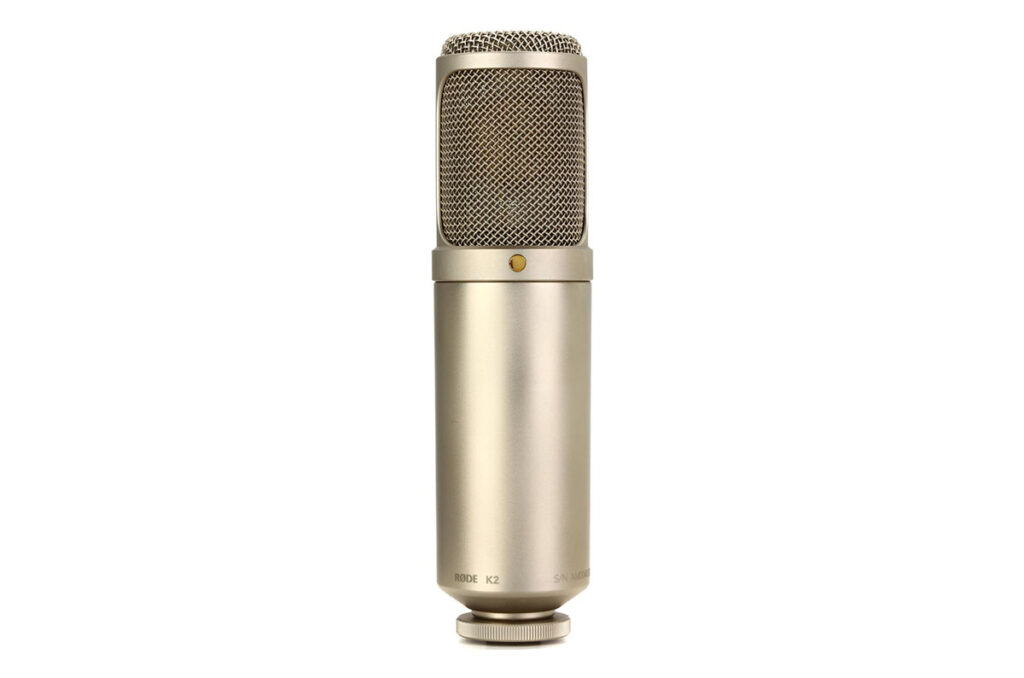
SPECIFICATIONS
Type: Tube condenser microphone
Directional characteristic: Stepless control between omnidirectional, cardioid and figure of eight
Optimal for: Recording of vocals
LINK
Rode K2 (729€)
ARGUMENTS IN FAVOR
- Tube character
- Very detailed
- Silky sound with plenty of warmth
NEGATIVE POINTS
- Not suitable for all situations
The Rode K2 is a relatively inexpensive tube microphone - I say relatively because it still costs over $700, which is not a lot for a tube microphone. This microphone delivers exactly the sound you expect: nicely saturated and with lots of overtones.
The sound is still very clear and all the details are captured. This microphone has a noticeable boost at 10 kHz - this is what gives the sound its coloration. There is also a slight boost in the 200 Hz to 400 Hz range.
The continuously adjustable polar patterns are a great feature - you can switch between cardioid, figure-eight and omnidirectional, which opens up a lot of possibilities. The different proximity effect alone makes an audible difference when switching.
beyerdynamic M 160 - Robust ribbon microphone with vintage flair
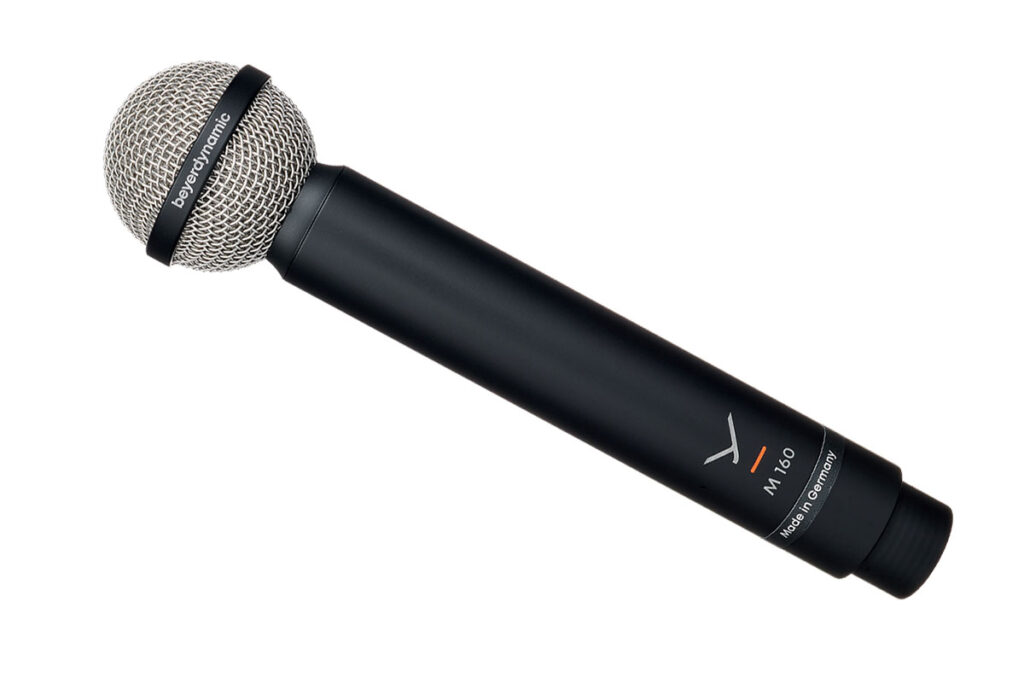
SPECIFICATIONS
Type: Dynamic ribbon microphone
Directional characteristic: Hypercardioid
Optimal for: Recording of vocals
LINK
beyerdynamic M 160 (749€)
ARGUMENTS IN FAVOR
- Vintage character
- Gentle heights
- Relatively robust (for a ribbon microphone)
NEGATIVE POINTS
- Not suitable for all situations
The Beyerdynamic M160 is a ribbon microphone with a hypercardioid polar pattern, which is strange in itself (ribbon microphones always have a figure-of-eight polar pattern due to their design).
But the sound is incredibly accurate, with strong bass and smooth highs as you would expect from a ribbon microphone. It adds a bit of vintage flavor to the voice, which is perfect for old-school recordings or when you want a more "lo-fi" sound in general.
With these microphones, the proximity effect is very pronounced, meaning that the sound of the voice changes greatly depending on the distance from the microphone. When you sing very close to the microphone, the voice becomes very bass heavy; when you sing farther away, the voice sounds more natural.
I would recommend this microphone to any producer who does a lot of music that sounds a bit old-fashioned, such as 60's rock, reggae or the like. But it can also be used by anyone who just wants to add some variety to their productions.
What else should be considered before buying
What is the polar pattern of the microphone?
The polar pattern of the microphone plays an important role in recording. While feedback is generally not a problem in studio recording, the directional characteristics of the microphone have a major impact on the proximity effect and therefore the sound.
There is no proximity effect with omnidirectional microphones, but it is strongest with figure-eight microphones. All others are centered, as this graph shows.

If your room is acoustically optimized, you can use any pattern. If not, you should definitely use a cardioid, hypercardioid, or supercardioid, as these patterns pick up less room reflections.
Frequency response of the microphone
A microphone's frequency response describes how it responds to each frequency in the audible spectrum. Most of the microphones on this list all have a small to medium boost somewhere in the mid/high range, because these are the frequencies that make the voice more assertive in the mix.
However, if you are looking for a particularly neutral microphone, you should choose a model with a very linear frequency response, such as the Neumann U87 or the Sennheiser MD-441, although these are the most expensive microphones in their categories.
Any microphone on this list will work for vocals, neutral or not. With neutral mics, these frequencies are likely to be slightly boosted in the mix anyway.
For male voices, the low frequencies can be critical, so the microphone should have a large diaphragm. For female voices, however, the very high frequencies are also important for clarity and presence. Therefore, a condenser microphone is usually the better choice, as it tends to have the widest frequency response.
The role of the preamp
The preamp you connect your vocal microphone to is at least as important as the microphone itself. There are many preamplifiers available, and each one has its own characteristics and sound, so a lot of experimentation is required.
Well-known preamps for vocals include the legendary Neve 1073, the Avalon VT-737SP or the Universal Audio 610. More affordable models include the Warm Audio WA73, Golden Age Audio Project PRE-73 or the SPL Goldmike 9844. If you want to learn more about preamps, I recommend this article.





